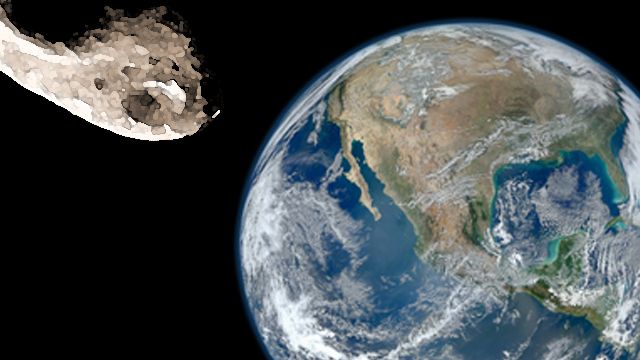
The red phone on my desk went off again, flashing and beeping urgently. What was it this time? Another super-villain escaped from prison, threatening the safety of Oakland City again? I pick up the phone to find out. Ah, it was Apophis again, back in the public eye and causing concern for one of our citizens.
This has been a dramatization.
At Chabot Space & Science Center, I'm the one who answers the science help line, which is why I keep my cape and cowl close at hand.
Ah, Apophis, that thousand-foot chuck of rock plotting to buzz the Earth. The citizen on the phone has called about Apophis before, so I figured it was time to back up my response with the word from a resident asteroid expert, Gerald, one of Chabot's asteroid tracking team—like Alfred passing the phone to Bruce.
Gerald's report on Apophis: After 3.8 years of observations, we project that Apophis will pass by (and miss) the Earth by about 23,600 miles on April 13 (yeah—Friday the 13th) 2029 (in case you want to plan a party). Then, Apophis will revisit the Earth's vicinity on April 13th (not a Friday) 2036. And here's the meat of the deal with Apophis: if its trajectory on the 2029 flyby is anywhere near what is predicted, then there is no chance at all that it will hit us in 2036. There is only a small chance that within the range of uncertainty the 2029 passage will aim Apophis for a 2036 impact with Earth--but the probability of that are calculated at less than 0.002%. That's roughly the same probability as drawing a straight flush right off the top of the deck (to you non-poker-players, the odds of that are about 72,000 to 1).
